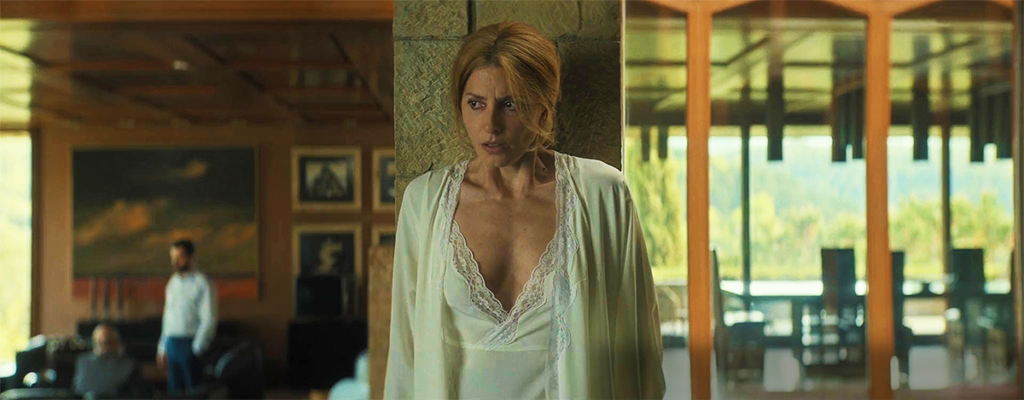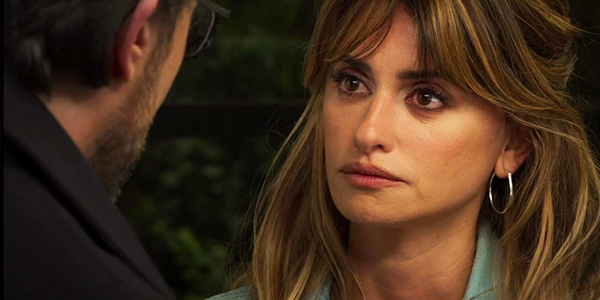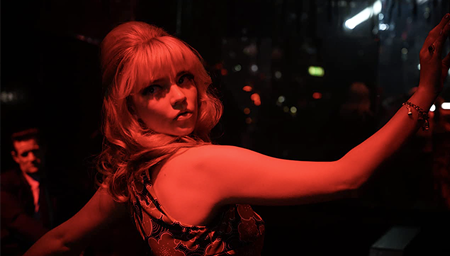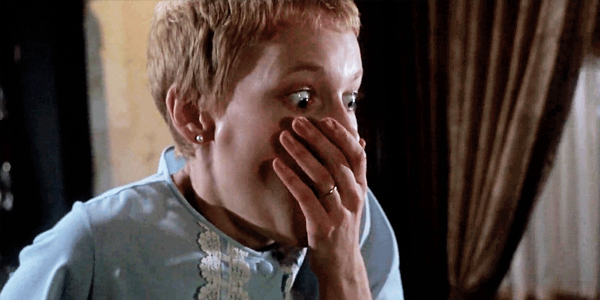
review | God’s Crooked Lines
The English version of this Spanish psychological thriller would be far more compelling if the dubbing wasn’t so bad
by Dennis Burger
December 28, 2022
It was my intent to begin by saying that God’s Crooked Lines (aka Los renglones torcidos de Dios) feels a bit like two separate decks of cards shuffled together by a seasoned croupier, but that doesn’t quite tell the whole story. In its original language, yes, that still feels true. Switch over to the laughably awful English dub available on Netflix, though, and it feels more like someone threw an Uno deck into a half-packed Cards Against Humanity box and gave it a perfunctory shake. So, in a sense, you have four movies in one here, although it’s really only worth watching in the original Spanish. If you’re allergic to subtitles, give this one a hard pass.
The reason that matters here even more than with most films is that God’s Crooked Lines largely lives or dies by its performances. It’s an interesting narrative, mind you, with gripping twists and turns, and one that blurs the lines between genres and serves as a textbook on the distinctions between tension and suspense—but it’s nearly impossible to invest in that narrative when the voices coming out of the characters’ mouths don’t seem like they could possibly have emanated from those characters’ bodies.
As for what the film is about, it’s tempting to describe it in reference to other films. It comes across at times as a cross between Gaslight and One Flew Over the Cuckoo’s Nest, with the subtlest hints of The Cabinet of Dr. Caligari thrown in for seasoning. More plainly, it’s the story of a woman who enters a psychiatric hospital under the pretense of solving a crime and her conflicts with the asylum director, the only authority who doesn’t buy her story.
I won’t say much more than that about the plot because it’s the sort of film that leaves the viewer guessing about what is real and what isn’t, who the reliable narrator is, if there is one, and even the order in which narrative events unfold at times. Frankly, it should be an exhausting film, especially given its 155-minute runtime. But it never crumbles under its own narrative weight and zips right by, largely due to the performances, especially those of Bárbara Lennie and Eduard Fernández, both of whom are hypnotic in every frame they occupy.
It’s also such a visually fascinating film that the eye cannot help but remain engaged. Unfortunately, I can’t say much about the way in which it was shot given that IMDb and the film’s closing credits both lack technical specifications but it was obviously shot digitally despite a rather filmic look. It some respects, it evokes the character of a less-contrasty Kodachrome, a film stock no commercial motion picture was ever shot on to my knowledge. What’s curious, though, is that much of the tonal and chromatic character of the imagery seems to come from the lenses, not any sort of film-look post-processing. If there was much of the latter, it was done with a careful hand. But given that I don’t know what the negative format was nor what lenses might have been used (aside from the fact that they’re obviously anamorphic), I’m left with little but speculation.
We can agree on this, though: Netflix’ video presentation is flawless. The Dolby Vision grading doesn’t feature intense specular highlights and it’s never eye-reactive, but it does seem to enhance shadow detail. There were times when I was shocked the relatively high-efficiency HEVC encode was able to keep up with the combination of difficult-to-encode elements—one scene involving a raging fire at night during a thunderstorm comes to mind as particularly impressive demo material that has every right to look a mess but doesn’t. The UHD resolution is also employed to good effect to enhance the textures of the architecture and clothing and natural environments around the hospital.
The Dolby Atmos presentation is also equally engaging although perhaps not as consistent. From time to time, it does get a little too aggressive with the surround effects, and the overhead channels can, on rare occasions, distract from the onscreen drama.
More often than not, though, the mix serves to enhance the ambiance of the environments, such as with the hum of the hospital’s fluorescent lamps, and to heighten the psychological drama, such as when Alicia/Alice enters her own mind palace to try to unravel the mysteries of her past and present circumstances. There’s a wonderful dreamlike quality to the mix in those scenes that works to their advantage.
Again, though, when it comes to the execrable English dub, take everything I said in the preceding paragraph and defenestrate it. The poorly cast and inappropriately performed voiceover work piddles all over everything good about the mix.
It’s really a shame such a worthwhile film wasn’t given a better dub for those who don’t enjoy subtitles. And that’s not to say God’s Crooked Lines is perfect or even the best mystery film of December 2022. It doesn’t quite rise to the level of Oriol Paulo’s best previous effort, 2016’s The Invisible Guest, largely as a result of the somewhat cluttered and disjointed climax and a few narrative threads that could have stood to be tightened up in one final pass at the script. If you’re a fan of psychological thrillers, though, don’t be scared off by the fact that this one doesn’t quite stick the landing. Far more about it works than doesn’t.
Dennis Burger is an avid Star Wars scholar, Tolkien fanatic, and Corvette enthusiast who somehow also manages to find time for technological passions including high-end audio, home automation, and video gaming. He lives in the armpit of Alabama with his wife Bethany and their four-legged child Bruno, a 75-pound American Staffordshire Terrier who thinks he’s a Pomeranian.
PICTURE | The Dolby Vision grading in Netflix’ flawless video presentation doesn’t feature intense specular highlights and is never eye-reactive but does seem to enhance shadow detail, while the UHD resolution is employed to good effect to enhance textures
SOUND | The Atmos presentation is equally engaging though not as consistent, occasionally getting a little too aggressive with the surround effects, which can cause the overhead channels to distract from the onscreen drama
© 2025 Cineluxe LLC





